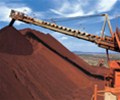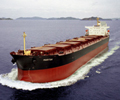Key trends in iron ore market amid volatile trading environment in 2021

Volatility gripped the iron ore market last year. Huge price movements saw multi-year highs followed by steep falls as supply and demand whiplashed over the course of the months.
With the past year now firmly behind us, let’s take a closer look at how the spot market fared throughout 2021.
S&P Global Commodity Insights’ Platts 62% Fe IODEX started the year at $164.5/dmt Jan. 4 and rallied to $233.1/dmt, an all-time high May 12, before dropping 48.9% from the peak to close at $119/dmt on Dec. 31.

We unpack the key trends that emerged in the iron ore market, including much-needed data on topics including brand-level market liquidity, price assessment participation and pricing mechanisms.
Rising trades and pricing points
S&P Global published 19,100 lines of iron ore price information, or “heards”, comprising fines, lump, pellet and concentrates in 2021, up 8.5% from 2020. Among the heards, S&P Global observed 969 spot transactions for seaborne iron ore, up 3.2% from trades in 2020.

The volume of spot seaborne iron ore trades S&P Global observed – which may not be all – rose around 6% year on year to over 118 million mt in 2021. Fines accounted for 80% of observed Asian spot trades for the year, followed by lump at 15.8%, pellet at around 1.7% and concentrate just shy of 0.7%.
As S&P Global strengthened ties with existing industry sources and continued development of new sources, 58 steel mills and 69 traders contributed to the price reporting process in 2021. Around half of the trades were directly reported to S&P Global, with the balance being collected by our pricing team with verification from multiple market sources. S&P Global also identified both counterparties in over 50% of the trades observed.


Bilateral negotiations
A larger number of trades S&P Global observed were done via bilateral negotiations – increasing from just over 41% of the total trades observed in 2020 to 60% in 2021.
Bilateral negotiations included spot and strip tenders. Strip tenders were multiple spot cargoes sold as a set to be delivered over several months, usually with a cargo to be delivered each month, and with several strip tenders including options for sellers to include more cargoes at their discretion.
This was more apparent in the beginning of Q3 when prices started plunging amid an oversupplied market with low demand. In China, mills were reselling their cargoes as they shut down blast furnaces or enter planned maintenance to comply with output control goals. Over Q3, international traders said the potential oversupply of spot cargoes in the last quarter in 2021 casted a cloud over buying interests. Bilateral negotiations allowed the miners to get a broad view of the price levels in the market before deciding to award the cargoes.

Fixed price trades
The percentage of transactions done on a fixed-price basis also fell sharply in Q3 as buyers preferred index-linked trades to capitalize on falling prices.
Platts IODEX plummeted 30.25% from $218.80/dmt July 1 to $152.60/dmt Aug. 31. Prices continued to slide until $94/dmt Sept. 20 before recovering.
On average, 2021 saw only 26% of the trades being done on a fixed price basis, down from 29% in 2020. The other 74% of the trades S&P Global observed were done on floating basis, which is index-linked.

Varying trade patterns for medium-grade fines
S&P Global observed more Pilbara Blend fines, or PBF, trades in H1 by Rio Tinto. However, as the iron ore prices slid in H2, we observed more BHP spot cargoes as the production increase of the South Flank mine led to more spot Mining Area C, or MACF, being offered and sold on the spot market by BHP. Vale’s spot sales of their medium-grade Brazilian Blend fines, or BRBF, has been consistent throughout the year, averaging four cargoes a month, despite fluctuations in their supply.

In June when prices were sustained at high levels, Rio Tinto sold 18 cargoes of PBF – their monthly highest for the year. Their spot volumes then dipped in Q3 as iron ore prices plunged, while the number of strips sold by Rio Tinto in H2 rose to 21, from just 6 recorded in H1. However, the limited PBF supply from the Pilbara region during the same period could have also contributed to the decrease in spot transactions.

Source: Platts

 Hellenic Shipping News Worldwide Hellenic Shipping News Worldwide, Online Daily Newspaper on Hellenic and International Shipping
Hellenic Shipping News Worldwide Hellenic Shipping News Worldwide, Online Daily Newspaper on Hellenic and International Shipping





















 PG-Software
PG-Software